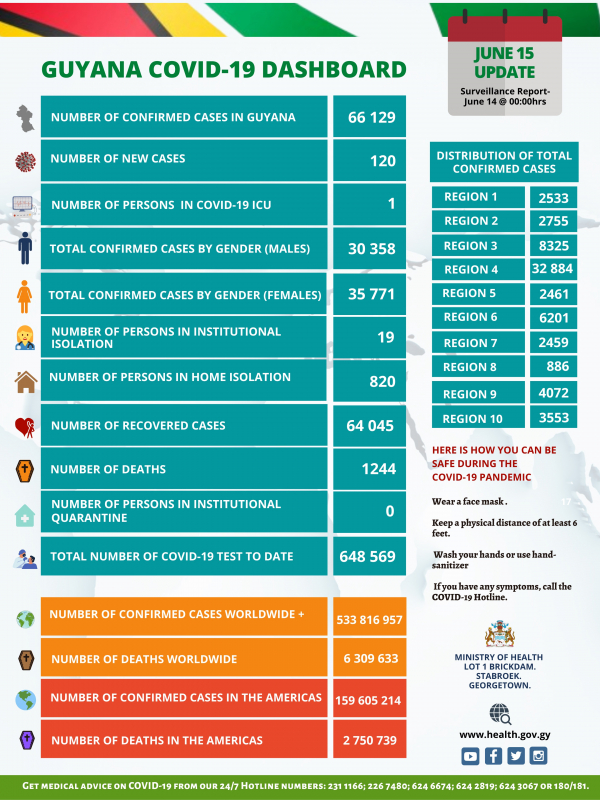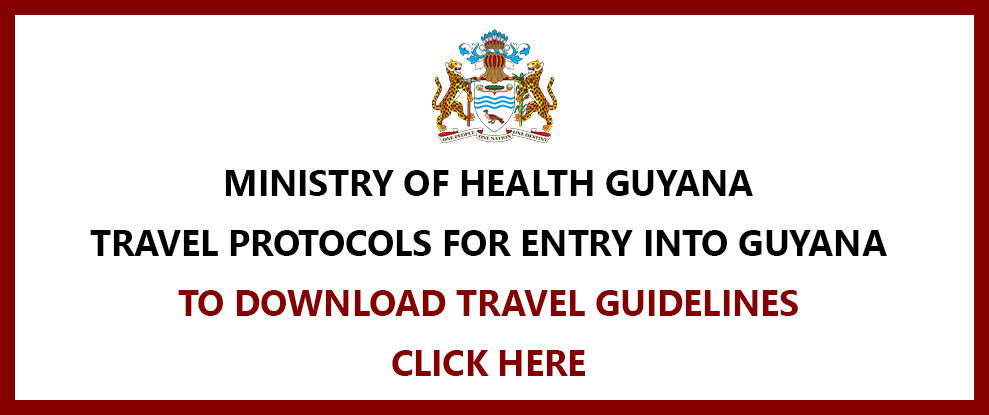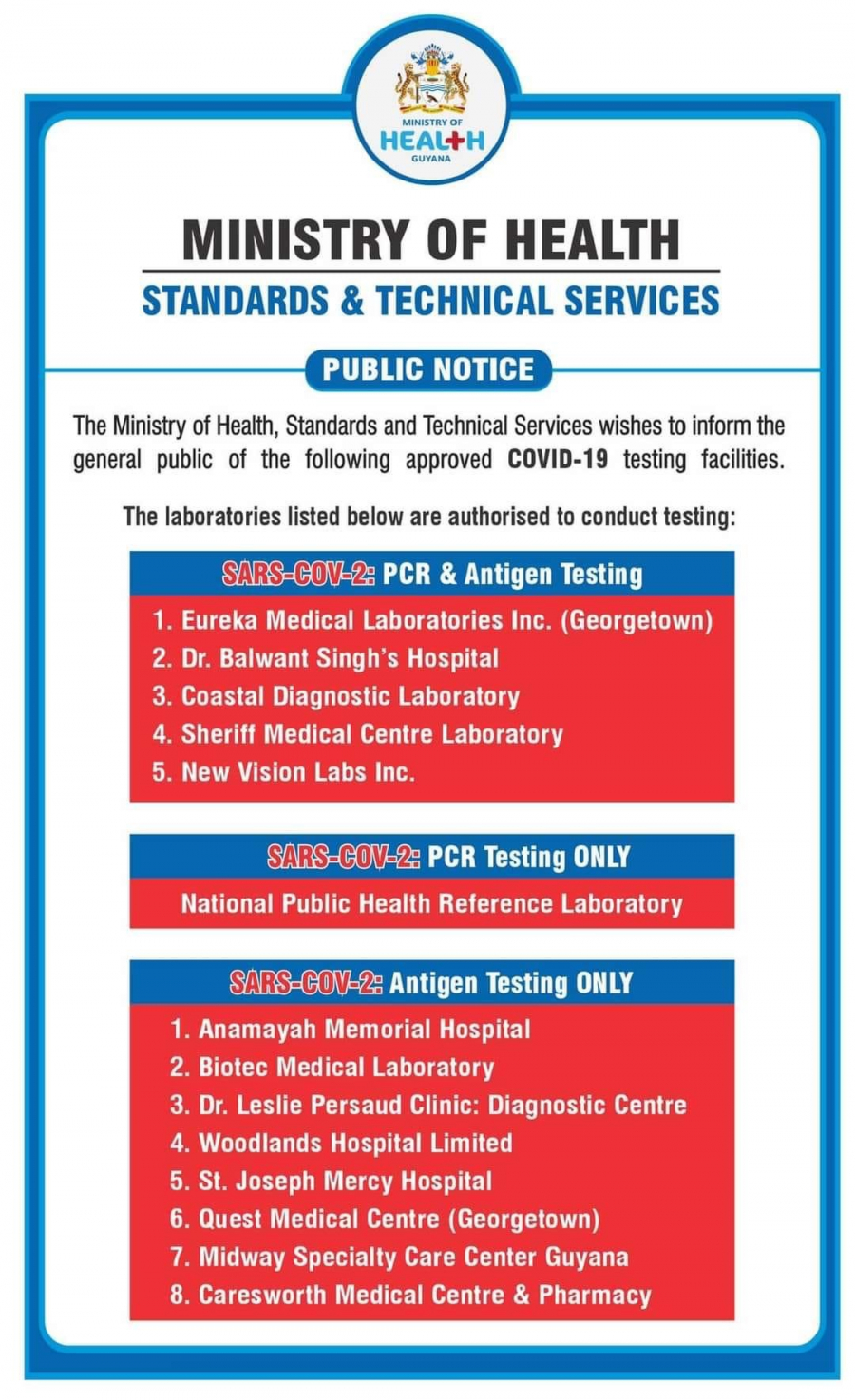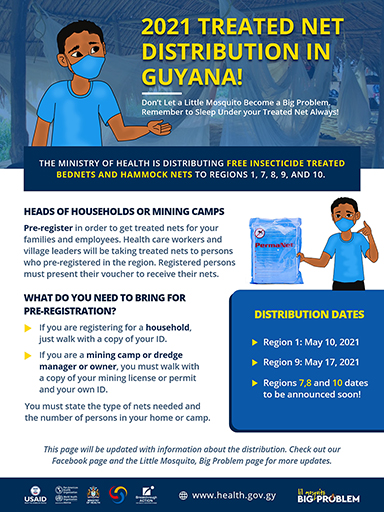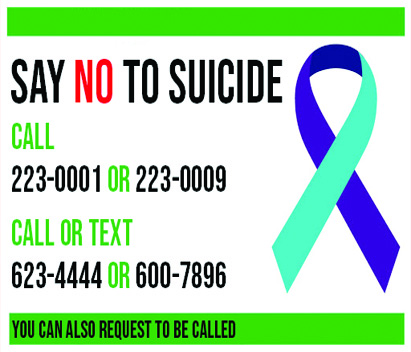- Details
- Written by Super User
- Category: Mental Health Unit
- Published: 17 July 2016
- Hits: 11176
Director (Ag): Dr. Meenawattie Rajkumar
Address: 252 Quamina Street, South Cummingsburg.
- Details
- Written by Super User
- Category: Mental Health Unit
- Published: 17 July 2016
- Hits: 10031
Mental Health Services
The following is a list of Satellite Clinics where mental Health Services are available:
| NAME OF FACILITY | REGION |
| Mabaruma Hospital | 1 |
| Baramita Health Centre | 1 |
| Public Hospital Suddie | 2 |
| Parika Health Centre | 3 |
| Leonora Diagnostic Centre | 3 |
| Georgetown Public Hospital Corporation | 4 |
| East Bank Demerara Reg. Hosp. | 4 |
| Georgetown Prisons | 4 |
| Enmore Policlinic | 4 |
| Mahaicony Regional Hospital | 5 |
| Skeldon Hospital | 6 |
| Number 64 Village Health Centre | 6 |
| National Psychiatric Hospital | 6 |
| Bartica | 7 |
| Lethem | 9 |
| Linden Hospital Complex | 10 |
- Details
- Written by Super User
- Category: Mental Health Unit
- Published: 17 July 2016
- Hits: 13328
NATIONAL SUICIDE PREVENTION PLAN 2015-2020
Executive Summary
Suicide is a major issue for society and a leading cause of years of life lost. In May 2013, the sixty-sixth World Health Assembly adopted the first ever Mental Health Plan of the World Health Organization (WHO). According to the WHO, Suicide prevention is an integral aspect of the plan with the goal of reducing the rate of suicide in countries by 10% by 2020. There is a combination of reasons why people die by suicide. However, many suicides happen impulsively and if the correct measures are instituted, many suicides are preventable.
In light of this call to action by the World Health Assembly, mental health including suicide was given prominence in the service priorities of the National Health Sector Plan 2013-2020 which has as its vision “that the people of Guyana are among the healthiest in the Caribbean and the Americas”. The Suicide Prevention Strategy 2015-2020 was informed by wide stakeholder consultation which included representatives from civil society, government ministries, Non-governmental organizations, health administrators, general health professionals, community and institutional based mental health care providers.
The strategy includes goals, objectives and lines of actions in order to identify the specific high-risk individual and groups for whom a tailored approach to their mental health is necessary for reduced suicide risk.
Children and young people have an important place in this strategy. Schools, social care and the juvenile justice system, as well as, charities highlighting problems such as bullying, poor body image and lack of self-esteem, all have an important contribution to make in suicide prevention among children and young people. Measures to help parents keep their children safe online are included.
The strategy incorporates activities across the continuum of suicide prevention supporting:
- Universal interventions which aim to engage the whole of a population to reduce access the means reduce inappropriate media coverage of suicide and to foster stronger and more supportive communities and schools.
- Selective interventions which aim to work with groups and communities who are identified as being at higher risk of suicide. Providing face to face response service for those bereaved by suicide, training for front line emergency response services in the community and coordination of suicide response services.
- Indicated interventions which target individuals who are showing signs of symptoms that are strongly associated with suicide or are in circumstances that place them at highest risk of suicide. For example, Suicide Prevention Helpline a telephone and peer support networks for those with suicide ideation and suicide attempt.
Key Considerations:
- The timely identification and referral of women and children experiencing abuse or violence, so that they are able to benefit from appropriate support.
- Those who work with men in different settings, especially in primary care, need to be particularly alert to the signs of suicidal behaviour.
- Treating mental and physical health as equally important in the context of suicide prevention will have implications for the management of care for people who self-harm, and for effective 24 hour responses to mental health crises.
- Accessible, high-quality mental health services are fundamental to reducing the suicide risk in people of all ages with mental health problems.
- Emergency departments and primary care have important roles in the care of people who self-harm, with a focus on good communication and follow-up.
- Continuing to improve mental health outcomes for people in contact with the criminal justice system will contribute to suicide prevention, as will ongoing delivery of safer custody.
- Suicide risk by occupational groups may vary locally, and it is vital that the statutory sector and local agencies are alert to this, and adapt their suicide prevention interventions accordingly. Tailor approaches to improve mental health in specific groups
- Improving the mental health of the population as a whole is another way to reduce suicide.
- Routine assessment for depression as part of personalized care planning for people with long-term conditions can help reduce inequalities and help people to have a better quality of life.
- Depression is one of the most important risk factors for suicide. The early identification and prompt, effective treatment of depression are critical in preventing suicide across the whole population.
- Given the links between mental ill-health and social factors like unemployment, debt, social isolation, family breakdown and bereavement, the ability of front-line agencies to identify and support (or signpost to support) people who may be at risk of developing mental health problems is important for suicide prevention.
- Measures that reduce alcohol and drug dependence are critical to reducing suicide.
- Staff in health and care services, education and the voluntary sector needs to be aware of the higher rates of mental distress, substance misuse, suicidal behaviour or ideation and increased.
- Continued vigilance by mental health service providers will help to identify and remove potential ligature points. Safer cells complement care for at-risk prisoners.
- Safe prescribing can help to restrict access to some toxic drugs.
- Local agencies can prevent loss of life when they work together to discourage suicides at high-risk locations.
- Local authority planning departments and developers can include suicide in health and safety considerations when designing structures which may offer suicide opportunities.
- Every suicide affects families, friends, colleagues and others. Suicide can also have a profound effect on the local community.
- It is important to provide effective and timely support for families bereaved or affected by suicide; have in place effective local responses to the aftermath of a suicide; andprovide information and support for families, friends and colleagues who are concerned about someone who may be at risk of suicide.
- Effective and timely emotional and practical support for families bereaved by suicide is essential to help the grieving process and support recovery.
- It is important that General Practitioners are vigilant to the potential vulnerability of family members when someone takes their own life.
- Post-suicide community-level interventions can help to prevent copycat and suicide clusters. This approach may be adapted for use in schools, workplaces, and health and care settings.
- The Mental Health Unit will continue to support high-quality research on suicide, suicide prevention and self-harm.
- . Reliable, timely and accurate suicide statistics are essential to suicide prevention. We will consider how to get the most out of existing data sources and options to address the current information gaps around ethnicity and sexual orientation.
The Strategy also relies on six cross-cutting values and principles:
Universal health coverage - be able to access, without the risk of impoverishing themselves, essential health and social services that enable them to achieve recovery and the highest attainable standard of health.
Human rights - actions and interventions for treatment, prevention and promotion must be compliant with the Convention on the Rights of Persons with Disabilities and other international and regional human rights regulations.
Evidence-based practice - and interventions for treatment, prevention and promotion need to be based on scientific evidence and/or best practice, taking cultural considerations into account.
Life course approach -policies, plans and services for mental health including suicide need to take account of health and social needs at all stages of the life course, including infancy, childhood, adolescence, adulthood and older age.
Multi-sectoral approach–a comprehensive and coordinated response for mental health requires partnership with multiple public sectors such as health, education, employment, judicial, housing, social and other relevant sectors as well as the private sector, as appropriate to the country situation.
- Details
- Written by Super User
- Category: Mental Health Unit
- Published: 17 July 2016
- Hits: 75011
Mission
To promote, coordinate and implement technical activities and actions directed towards strengthening the national capacity to develop policies, plans, programs and services, thus contributing to the promotion of mental health, the reduction of the burden of the psychiatric diseases, prevention of disabilities, and the development of rehabilitation.
- Details
- Written by Super User
- Category: Mental Health Unit
- Published: 17 July 2016
- Hits: 10208
NATIONAL MENTAL HEALTH ACTION PLAN 2015-2020
Executive Summary
There is no health without mental health. The relationship between physical and mental health is multifaceted. Mental disorders increase risk for communicable and non-communicable diseases, and contribute to unintentional and intentional injuries. Mental health, like other aspects of health, can be affected by a range of socioeconomic and psychological factors that need to be addressed through comprehensive strategies for promotion, prevention, treatment and recovery.
In May 2012, the Sixty-fifth World Health Assembly adopted resolution WHA65.4 on the global burden of mental disorders and the need for a comprehensive, coordinated response from health and social sectors at the country level. In light of this call to action, mental health was given prominence in the service priorities of the National Health Sector Strategy 2013-2020 which has as its vision “that the people of Guyana are among the healthiest in the Caribbean and the Americas”.
This plan, which was developed jointly by the Mental Health Team of the Georgetown Public Hospital Corporation, the Ministry of Public Health (MoPH) and the Pan-American Health Organization (PAHO) Guyana, presents the justification and advantages of providing a national mental health strategy in Guyana. At the same time, it outlines strategic actions on how to implement and scale-up interventions and primary care services for mental health.
The National Mental Health Strategy 2015-2020 was informed by wide stakeholder consultation which included representatives from civil society, Government Ministries, NGO’s, health administrators, general health professionals, and community and institutional-based mental health care providers.
This Strategy is divided into 4 distinct Chapters, taking into consideration the varying health needs of individuals across the life-course:
Chapter I provides the context and the background for understanding the mental health care system. It explains how this important component of health, like other aspects of health, can be affected by a range of socioeconomic and psychological factors that need to be addressed through comprehensive strategies for promotion, prevention, treatment and recovery in a whole-of-government approach. It highlights the aspects of the former Mental Health Strategy, adopted by Guyana in 2008, that were successfully implemented during the period 2010-2013 with some positive outcomes, the progress achieved as well as challenges to its implementation
It gives a detailed explanation about the process that guided the development of the Strategy and acknowledges the commitment shown by the Government of Guyana to improve the mental health situation as well as provides the basis on which to build a mental health system which aligned with PAHO/WHO’s recommendations and tailored to the Guyana context.
Chapter II provides an overview of the mental health situation and includes a situational analysis of mental health in Guyana, data from statistical reports about the prevalence of mental illness worldwide, in the Caribbean countries and the local situation about the burden of mental ill health. In outlining the mental health context, data about morbidity, mortality and disabilities in mental health for Guyana is shared, including a suicide behavior profile, since suicide is considered one of the most serious mental health problems and is regarded as a national imperative.
Complex socio-cultural factors and the presence of a mental disorder are likely very significant attributable risk factors and have contributed to a high prevalence of deaths and injuries due to violence and accidents; as well as a cycle of mental health issues including self-harm, depression and anxiety disorders. Risk factors for mental illness in Guyana are related to environmental, life style practices, biological and psychosocial factors which include, social class, gender, racial conflicts, housing, occupational risks, access to services, smoking, limited national policies, globalization, macroeconomics, national politics and urbanization.
The factors that characterize the Guyana mental health systems and, services, the scope of legislations and inadequate human resources which make services inaccessible to the population are also issues that are discussed.
The chapter also outlines how the provision of mental health services can improve access, as a human right; and ultimately produce better health outcomes at lower costs for individuals, families and the government.
Chapter III describes the need to address the mental health burden, with a plan of action which is aligned with WHO and PAHO’s global and regional frameworks for mental health and the priorities outlined in the National Health Sector Strategy 2013-2020 with special attention to results, indicators, and targets. This action plan sets out the vision, mission, goals, values, principles, objectives and lines of action needed to effectively address mental health in Guyana.
Chapter IV details the specific strategic objectives with lines of actions and indicators, detailing definitions, structures, baselines, targets and lead responsibilities.
Finally, the Mental Health Action Plan 2015-2020 includes a section with different considerations about monitoring and evaluating the Plan aligned which is aligned with the Ministry of Health’s monitoring framework and its evaluation processes. Financial and administrative elements with time frames were also considered and included in the implementation plan. The implementation plan is for a period of five years and a monitoring and evaluation component has also been included.
Page 1 of 2

